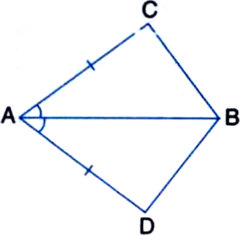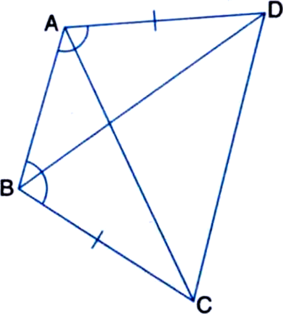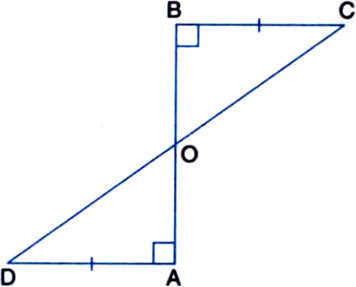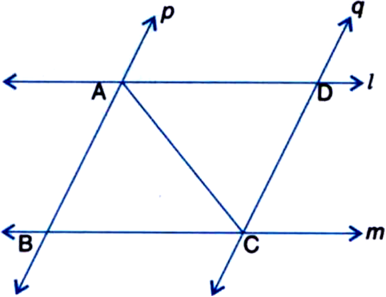In quadrilateral ACBD, AC = AD and AB bisects ∠A (see figure). Show that ∆ABC ≅ ∆ABD. What can you say about BC and BD?

Given: In quadrilateral ACBD, AC = AD and AB bisects ∠A.
To Prove: ∆ABC ≅ ∆ABD.
Proof: In ∆ABC and ∆ABD,
AC = AD | Given
AB = AB | Common
∠CAB = ∠DAB
| ∵ AB bisects ∠A
∴ ∠ABC ≅ ∠ABD | SAS Rule
∴ BC = BD | C.P.C.T,








